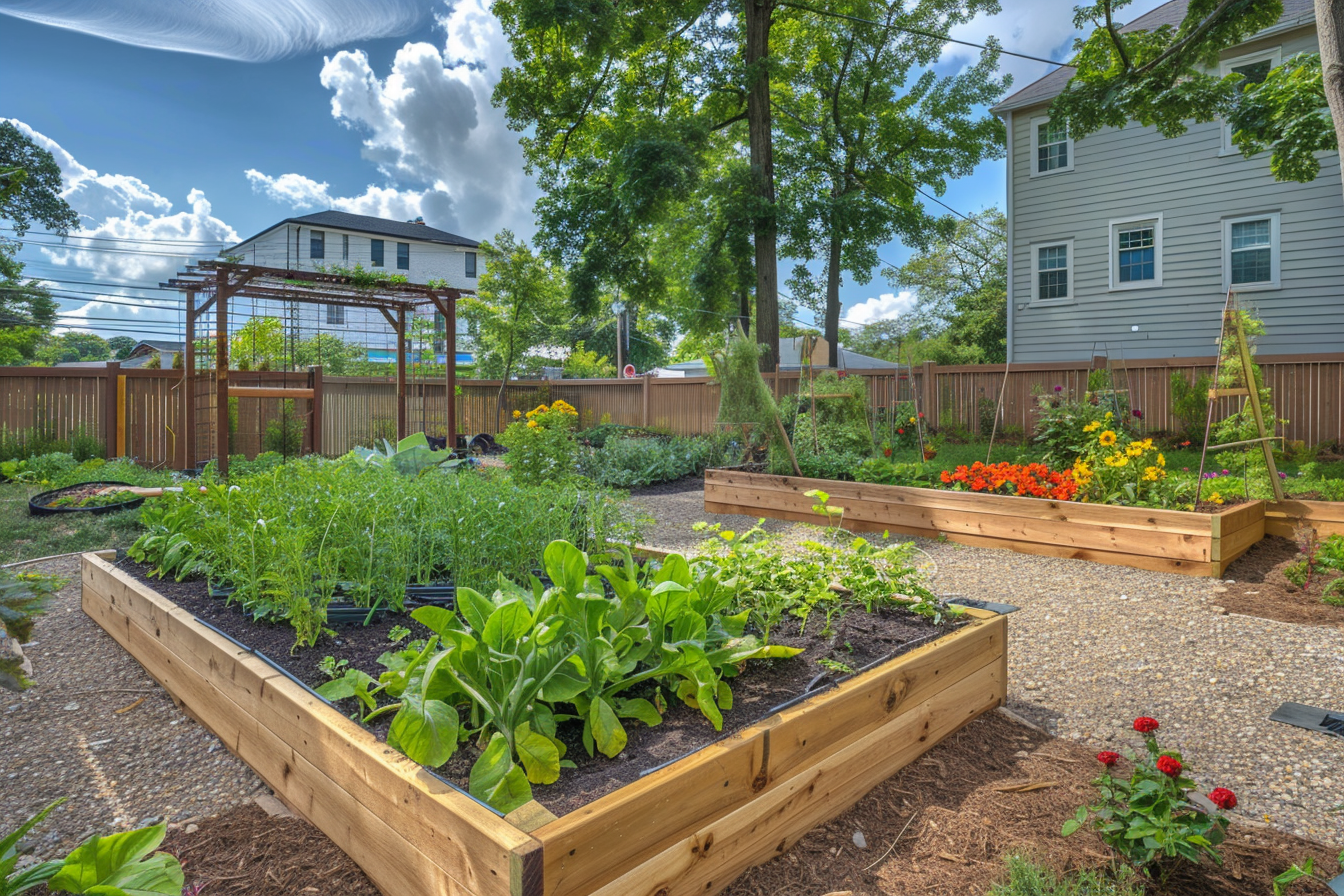If you follow any of the garden blogs or still like leafing through magazines, you will most likely have noticed over the past few years that raised vegetable gardens have made a comeback.
Some will probably question whether they ever fell out of popularity.
As I meet with clients, I find more people are considering implementing raised gardens in which to grow their vegetables and herbs.
There are some definite benefits to building raised gardens.
One of the benefits is that raised gardens save your back.
Building raised vegetable gardens will reduce the amount of back strain because you are no longer having to reach down to ground level.
If you are like me (aging gracefully), I keep saying that I must be getting taller as I age, as the ground keeps getting further away.
Raising the height of the beds allows you to weed and harvest your vegetables without bending down as far and straining your back.
When considering how high to make your beds, go a minimum of twelve inches tall. This way you can sit on the edges of the bed which makes things even easier.
With raised gardens in the spring, the soil in the beds tends to warm up quicker than the surrounding ground.
This is because the sun is hitting multiple surfaces at one time.
The soil also tends to dry faster from the melting snow and heavy, early spring rains.
This means that you can start planting your cool-season crops earlier in the season.
Some of the cool-season vegetables include peas, cabbage, lettuce and broccoli.
It also makes it easier to extend the spring and late fall seasons by adding hoops over the bed and covering them with plastic.
This allows you to keep harvesting for a couple of weeks longer in the fall.
Spreading mulch, straw or pea gravel on the ground between the raised boxes will cut down on the amount of lawn you will have to maintain.
Many of us have that horrible clay soil in our yards. Raised vegetable gardens provide you with an opportunity to fill them with an ideal soil-compost mix that will be perfect for growing vegetables.
The best mix to use in your boxes would be a combination of nutrient-rich topsoil combined with compost, such as composted manure, leaf compost or mushroom compost.
In the past, peat moss was used extensively as a soil amendment, but it does not really provide any nutrient value at all.
Once your raised beds are filled with fresh soil, cover the surfaces with an inch or two of mulch to cut back on weeds, thus reducing competition for nutrients and preserving moisture.
Another big benefit of raised vegetable gardens is that you will never have to till the soil.
Since there is no foot traffic in the beds (or very little), the soil does not become compacted.
So, raised vegetable garden beds provide a healthier environment for beneficial microorganisms and earthworms, which means a healthier root system.
Here are a few design tips when thinking of adding some raised gardens:
- Keep your raised beds narrow enough that you can reach the middle from both sides while standing or sitting on the outside of the bed. Usually, no wider than four feet since the average person can reach about two feet.
- Space the garden beds so that there is enough space to get a wheelbarrow or lawn mower through between. I would suggest a minimum of two feet wide.
- When selecting material to use to build your beds, choose a rot-resistant lumber such as cedar or redwood or other material such as brick, stone, or concrete.
- Include trellises, obelisks, or screens in your raised gardens to grow vine-like crops such as peas, beans, cucumbers, squash, and tomatoes. This can add interest to your gardens and it is also a great space saving technique.
Joanne Young is a Niagara-on-the-Lake garden expert and coach. See her website at joanneyoung.ca











